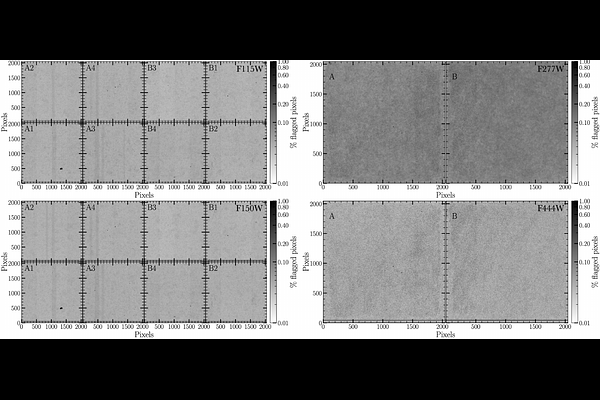COSMOS-Web: Comprehensive Data Reduction for Wide-Area JWST NIRCam Imaging

COSMOS-Web: Comprehensive Data Reduction for Wide-Area JWST NIRCam Imaging
Maximilien Franco, Caitlin M. Casey, Anton M. Koekemoer, Daizhong Liu, Micaela B. Bagley, Henry Joy McCracken, Jeyhan S. Kartaltepe, Hollis B. Akins, Olivier Ilbert, Marko Shuntov, Santosh Harish, Brant E. Robertson, Rafael C. Arango-Toro, Andrew J. Battisti, Nima Chartab, Nicole E. Drakos, Andreas L. Faisst, Carter Flayhart, Ghassem Gozaliasl, Michaela Hirschmann, Richard Massey, Jason Rhodes, Zahra Sattari, Diana Scognamiglio, John R. Weaver, Lilan Yang, Jorge A. Zavala, Edward M. Berman, Fabrizio Gentile, Steven Gillman, Arianna S. Long, Georgios Magdis, Jacqueline E. McCleary, Jed McKinney, Bahram Mobasher, Louise Paquereau, Armin Rest, David B. Sanders, Sune Toft, Si-Yue Yu
AbstractWe present the data reduction methodology used for the COSMOS-Web survey JWST NIRCam data. Covering 0.54 deg^2 with four broadband filters (F115W, F150W, F277W, F444W) and a total exposure time of approximately 270 hours, COSMOS-Web represents the largest contiguous field surveyed during JWST Cycle 1, posing unique data reduction challenges due to its extensive scale. By combining the official JWST Calibration Pipeline with custom improvements for noise removal, background subtraction, and astrometric alignment, we achieve high fidelity science-ready mosaics. We detail the systematic approach employed in the three stages of the JWST Calibration Pipeline. The data, collected in three epochs from January 2023 to January 2024, encompass 152 visits and have been processed into 20 mosaic tiles to optimize computational efficiency and data processing. The final data products achieve 5 sigma depths of 26.7-28.3 AB mag in 0.15" apertures. The processed and calibrated datasets are made available to the public.